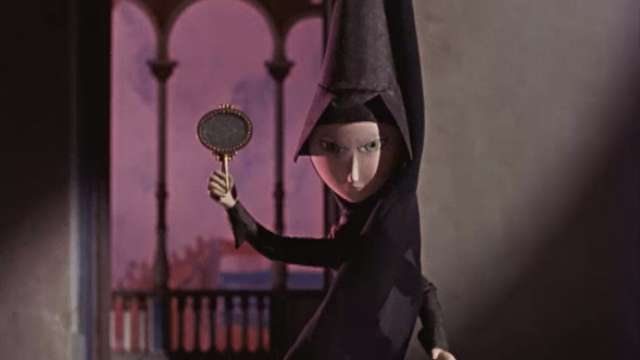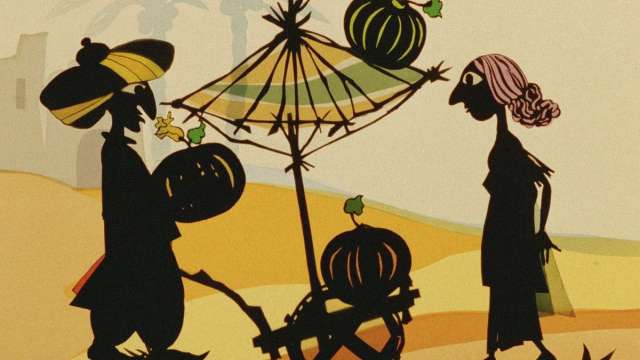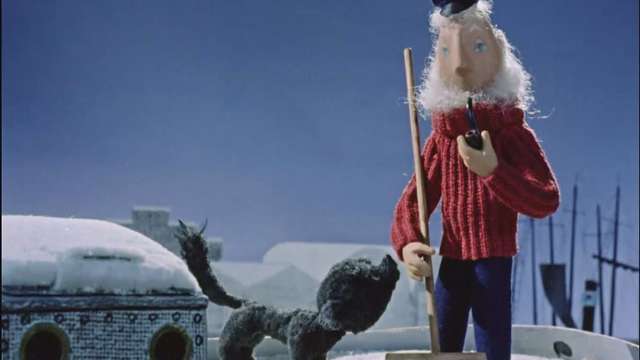
DEFA Animation
Between 1955 and 1990, the DEFA Studio for Animated Film produced around 950 animated films of all genres using techniques common at the time and aimed at both children and adults.
Provenance
Production period
1955-1992
Number of films
approx. 950
Running time
2-70 min
Material
35mm | mainly coloured
Topics
fairy tales, entertainment, children's books, children's films
Techniques
2D animation (cartoon, lay-up animation, silhouette animation/ silhouette cut) and stop-motion (kneading animation/claymation, puppet animation)



Background
DEFA cartoons and animated films
Between 1955 and 1990, the DEFA Studio for Animated Film produced around 950 animated films of all genres using techniques common at the time and aimed at both children and adults. Thematically, the films range from fairy tales and children's book adaptations to political-ideological and socio-critical content.
The DEFA Studio for Animated Films was founded in 1955 in the previously disbanded Dresden branch of the DEFA Studio for Popular Films in Potsdam-Babelsberg. By 1990, some 950 animated cinema and television films for children and adults had been produced there. The films cover all genres and techniques of film animation that were common at the time: 2D animation (animation, laying animation and silhouette trick/scissors cut) and stop-motion (clay/claymation and puppet animation). These different techniques all had a tradition in Germany, but after the Second World War some of them had to be relearnt. The initial period was therefore characterized by trying out the different techniques, especially since the technical equipment did not at first meet international standards. Modernisation measures from the mid-1960s onwards, however, temporarily made the DEFA animated film studio the most modern of its kind in Europe.
The DEFA studio for animated films produced mainly for a young audience. About three quarters of all films were made for children, including numerous adaptations of fairy tales and children's books from all over the world. Educational films, for example on occupational safety, were produced primarily for adults. The film production was carried out according to a fixed annual plan coordinated with PROGRESS and was divided into films of cultural-political importance, children's films and other films, including commissioned productions for GDR television or institutions such as the Free German Trade Union Federation (FDGB) at times accounting for two thirds of the studio's total production. Starting in the 1970s, the studio expanded its international exchange and worked with the Association internationale du film d'animation (ASIFA), among others. Co-productions were made with the film studios Krátký Film in Prague and Soyuzmultfilm in Moscow as well as fairy tale adaptations for Italian television.
In the 1980s, under the new head dramaturg and artistic director Marion Rasche, the studio opened itself up to innovative ideas and influences from outside, enabled visual artists to try their hand at the medium of film, trained new talent and further developed its artistic identity. The studio tried out new content and took an increasingly critical look at the social conditions in the German Democratic Republic (GDR). In 1989, the DEFA animated film studio employed 248 people.
After the end of the GDR, the DEFA animated film studio was first converted into a corporation, which was then sold to the Mitteldeutscher Rundfunk (MDR). With a further transformation into DREFA Filmatelier GmbH and the dismissal of the artistic and artistic-technical staff, animated film production in what was once Germany's largest animation studio came to an end.